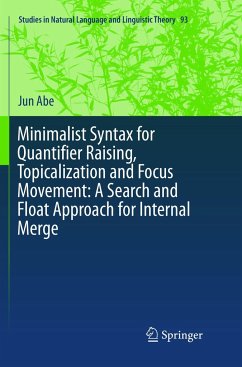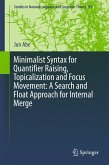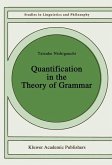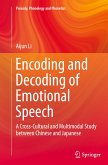This volume examines how the displacement property of language is characterized in formal terms under the Minimalist Program and to what extent this proposed characterization of it can explain relevant displacement properties. The birth of the Principles and Parameters Approach makes it possible to simplify transformational rules so radically as to be reduced to the single rule Move. The author proposes that Move, as conceived as a special case of Merge, named internal Merge, under the Minimalist Program requires two prerequisite operations: one is to "dig" into a structure to find a target of Merge, called Search, and the other is to make this target reach the top of the structure, called Float. The author argues that these two different operations are constrained by "minimal computation." Due to the nature of how they apply, these operations are constrained by this economy condition in such a way that Search must be minimal and Float obeys Minimize chain links, which requiresthat this operation cannot skip possible landing sites. The author demonstrates that this mechanism of minimal Search and Float deals with a variety of phenomena that involve quantifier raising, such as rigidity effects of scope interaction, the availability of cumulative readings of plural relation sentences and pair-list readings of multiple wh-questions. Also demonstrated in this volume is that the same mechanism properly captures the locality effects of topicalization, focus movement, and ellipsis with contrastive focus.
Bitte wählen Sie Ihr Anliegen aus.
Rechnungen
Retourenschein anfordern
Bestellstatus
Storno









